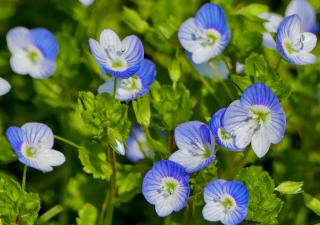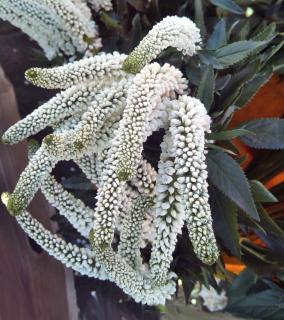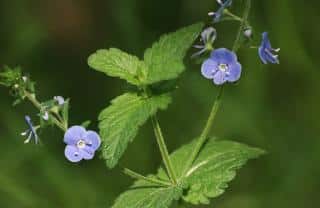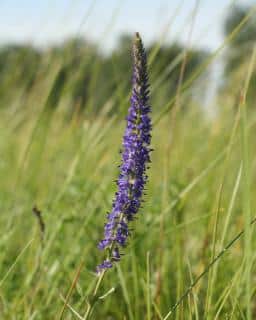

Veronica is a cute grassy perennial (annual if freezing).
Key points to remember
Name – Veronica spp.
Family – Scrophulaceae
Type – Perennial
Height – 16 to 32 inches (0.5-1 m)
Soil – normal
Exposure: full sun – Foliage: semi-evergreen – Blooming: mid-spring → fall
The blooming is really impressive when compared to how little care it asks for. Depending on the climate zone, it sometimes grows as an annual.
Best plant veronica in spring with a density of 5 to 10 specimens to a square yard (1 m²). This will really make the plot feel lush and bushy.
 It flowers best when in a place that gets quite a lot of sun.
It flowers best when in a place that gets quite a lot of sun.Propagate the plant through clump division in Fall or Spring.
Veronica loves proper drainage, so that’s certainly one of the goals of your potting setup.
 Make sure there’s a hole for excess water to drain out from
Make sure there’s a hole for excess water to drain out fromDepending on how often you fertilize and water, potted veronica might grow anywhere from 1 foot to 3 feet tall (30 to 100 cm).


Depending on the species, colors range from light to dark blue, but also include carmine red and even pure white. The shape can change as well, like the surprising Veronica spicata shown here (“spiked speedwell” in common English).
A closely related cousin, Hebe, goes by the name shrubby veronica. This specific type of veronica is definitely among the most striking flower shrubs.
The botanical name for the plant, Veronica, comes from the Latin word vera which means “true” and “authentic”. That’s a nice takeaway for this simple, authentic beauty!
Bees love this plant for the abundant nectar it provides from spring all the way to the end of summer.
It is recommended to water in case of warm weather. Water in the evening to reduce evaporation. More water reaches the plants and you can save on watering.